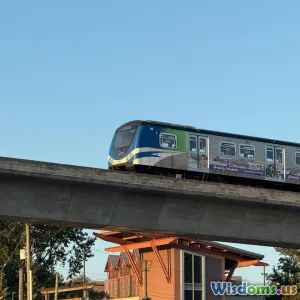
Can Load Balancing Alone Solve Sudden Network Bottlenecks
10 min read Explores if load balancing alone can solve sudden network bottlenecks and what complementary strategies optimize performance during traffic surges. (0 Reviews)
Can Load Balancing Alone Solve Sudden Network Bottlenecks?
Introduction
Picture this: A streaming platform’s servers are streaming live during a major sports event, and abruptly, millions of users flood the network simultaneously. Suddenly, latency spikes, users face buffering hell, and services stumble under pressure. This real-world predicament highlights a common challenge—sudden network bottlenecks.
System architects and IT teams often champion load balancing as the go-to solution to distribute traffic evenly. But is load balancing alone robust enough to quash these bottlenecks effectively? This article delves into the mechanics behind load balancing, examines its role and limitations during sudden traffic surges, and uncovers strategies to complement it for network nimbleness and resilience.
Understanding Network Bottlenecks
A network bottleneck occurs when the capacity of the network path or system component is insufficient to handle the current demand, resulting in reduced throughput, heightened latency, or outright failures. Bottlenecks can manifest in multiple layers — from physical hardware limits like bandwidth constraints, to software issues like inefficient routing or overloaded servers.
Types and Causes
- Bandwidth Saturation: When throughput capacity maxes out, such as a 100 Mbps link being overwhelmed by 200 Mbps of data.
- Processing Power Constraints: Servers struggling under CPU or memory pressure during peak loads.
- Latency Induced by Queuing: Packets waiting in buffers cause delays, leading to cascading slowdowns.
Real-world data underscore bottlenecks’ impact. Amazon reported a 0.1-second load time delay during peak traffic led to a 1% sales loss (source: Amazon Retail Metrics). Similarly, Akamai’s 2023 State of the Internet report showed that web performance degradation during traffic spikes cost businesses billions annually.
Load Balancing: The Basics
At its core, load balancing is the practice of distributing network or application traffic across multiple servers or paths to optimize resource use, maximize throughput, ensure high availability, and minimize response time. Load balancers can be hardware-based or software-driven and operate at different OSI model layers (Layer 4 transport, Layer 7 application).
How Load Balancing Works
- Round Robin: Requests are distributed sequentially to servers.
- Least Connections: Directs traffic to the server with the fewest active connections.
- IP Hashing: Uses client IP to consistently send traffic to a specific server.
With load balancing, the goal is to prevent any single server from overloading. A classic example involves Netflix, which uses extensive load balancing to handle hundreds of millions of requests per day globally, dynamically reallocating traffic to maintain performance.
Can Load Balancing Alone Solve Sudden Network Bottlenecks?
The Strengths of Load Balancing
- Immediate Traffic Distribution: Load balancing can swiftly divert traffic from an overloaded node to underutilized ones, reducing localized stress.
- Fault Tolerance: By distributing requests, it masks failure or slowdown of individual servers, supporting uninterrupted service.
- Scalability: Facilitates horizontal scaling by adding servers and balancing loads.
However, the scenario is more nuanced when evaluating load balancing as a standalone measure for sudden bottlenecks.
The Limitations Exposed
-
Bottleneck Outside Load Balancer Scope: If congestion occurs at the upstream network infrastructure, such as ISP link saturation or hardware switch limits, load balancing among backend servers offers no relief. The choke point is beyond the load balancing layer.
-
Backend Resource Constraints: Even if traffic is balanced perfectly, servers may still have insufficient CPU, memory, or disk I/O to process sudden surges efficiently. Overwhelmed servers become bottlenecks regardless of request distribution.
-
Latency Introduced by Balancer: Complex load balancing algorithms introduce processing overhead or network hops, which in latency-sensitive applications might exacerbate the delay.
-
Configuration and Scaling Delays: Load balancers depend on health checks and scaling policies. Sudden spikes can overwhelm resources before the load balancer triggers scale-out actions.
Case Study: The FIFA World Cup Traffic Surge
During the 2018 FIFA World Cup, broadcasters and streaming platforms faced massive unpredictable demand spikes. Many platforms had load balancers in place; however, some still experienced intervals of buffering and outages. Post-event analyses revealed that while load balancing helped distribute traffic among servers, the underlying network bandwidth and backend processing limits also needed enhancement to manage the sudden flood.
Statistically, the efficiency of load balancers during such spikes depends largely on the “headroom” — pre-existing spare capacity — in upstream components.
Complementary Strategies to Address Sudden Bottlenecks
To effectively manage sudden network bottlenecks, blending load balancing with other robust strategies is crucial.
1. Capacity Planning and Over-Provisioning
While it may seem wasteful, maintaining spare bandwidth and server capacity buffers against traffic surges. Industry leaders like Google over-provision resources anticipating load peaks, ensuring bottlenecks rarely manifest.
2. Auto-scaling Infrastructure
Cloud platforms such as AWS and Azure provide elasticity features enabling automatic addition/removal of compute resources based on real-time demand. This proactive scaling shrinks response times for bottleneck relief more effectively than static load balancing alone.
3. Traffic Shaping and Rate Limiting
Implementing traffic shaping controls helps prevent specific users or applications from overwhelming parts of the network. For example, CDNs like Cloudflare use rate limiting to throttle excessive requests while maintaining overall system integrity.
4. Deep Network Monitoring and Analytics
Real-time telemetry tools identify bottlenecks swiftly, enabling preemptive actions. Platforms like Datadog and Grafana offer granular insights into latency, CPU utilization, and request queues across all nodes.
5. Multi-Path Routing and CDN Usage
Leveraging multiple network paths and employing Content Delivery Networks (CDNs) decentralizes content delivery, reducing strain on central servers and common network chokepoints.
6. Application and Database Optimization
Sometimes bottlenecks derive from inefficient queries or process logic. Fine-tuning code and database indexing can drastically reduce processing overhead and responsiveness limits.
The Future: AI-Powered Load Balancing and Bottleneck Prediction
Emerging AI and machine learning models enhance traditional load balancing by predicting traffic surges and automating scaling decisions based on learned patterns. For instance, Netflix’s application of AI anticipates demand spikes for popular shows, preemptively scaling resources, cutting buffering by nearly 50%.
Conclusion
Load balancing undoubtedly remains a cornerstone technology for managing network traffic. It offers immediate distribution benefits that can mitigate localized overloads efficiently. However, it is not a silver bullet for sudden network bottlenecks. These bottlenecks often stem from underlying infrastructure limits and dynamic traffic patterns demanding a blend of capacity planning, auto-scaling, traffic control, deep monitoring, and content distribution strategies.
Businesses seeking high availability and performance during unpredictable surges must adopt a layered approach. They should view load balancing as one vital component within a holistic network resilience blueprint. Through proactive infrastructure investment, intelligent automation, and continuous optimization, organizations can transform sudden bottlenecks from crippling failures into manageable events.
In a digital world where milliseconds dictate user satisfaction and revenue, strategically coupling load balancing with complementary solutions ensures networks not only survive sudden traffic storms but thrive amid them.
References:
- Amazon Retail Metrics: Impact of Load Time On Conversion Rates
- Akamai State of the Internet Report 2023
- Netflix Tech Blog: Load Balancing and Traffic Prediction with Machine Learning
- Cloudflare: Traffic Management and Rate Limiting Techniques
Rate the Post
User Reviews
Popular Posts



















